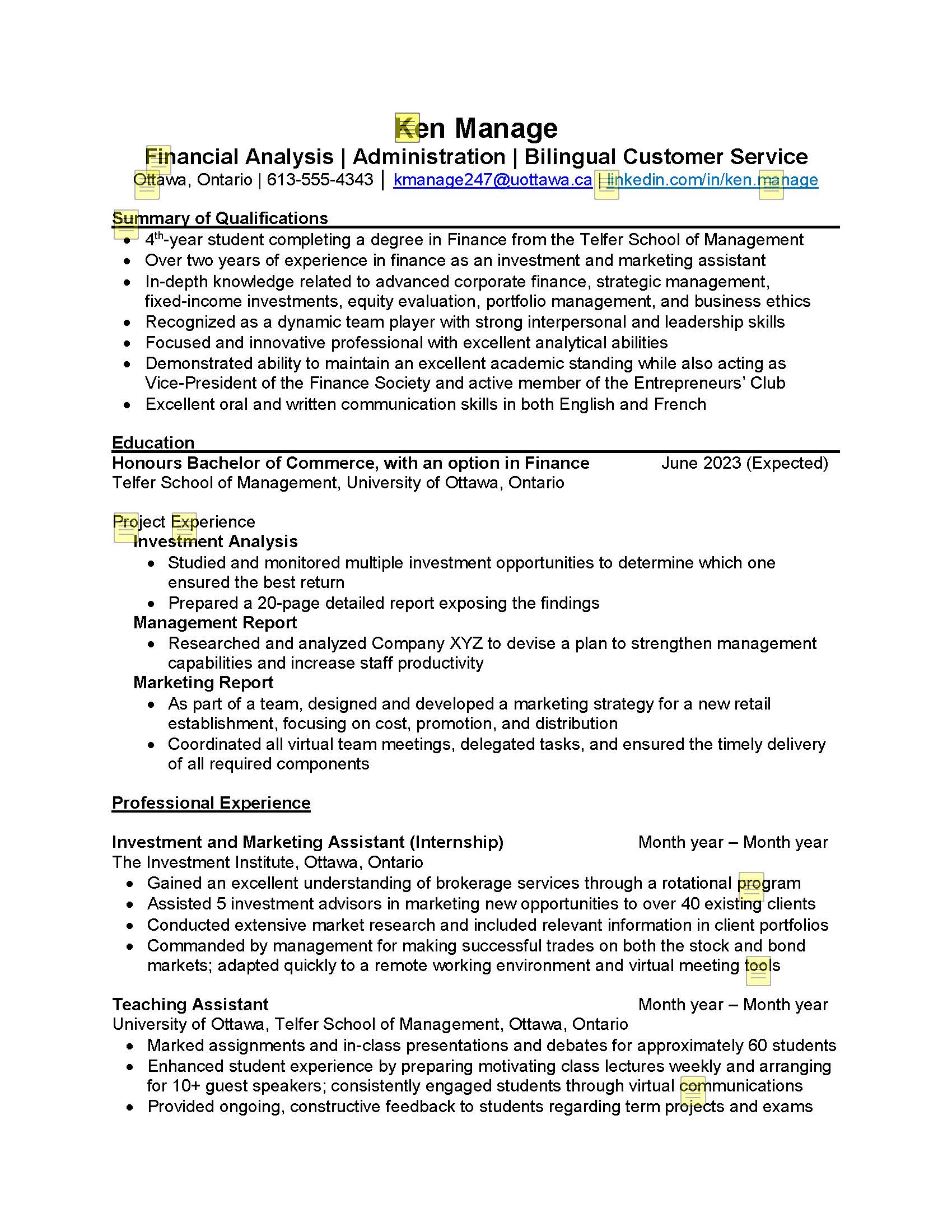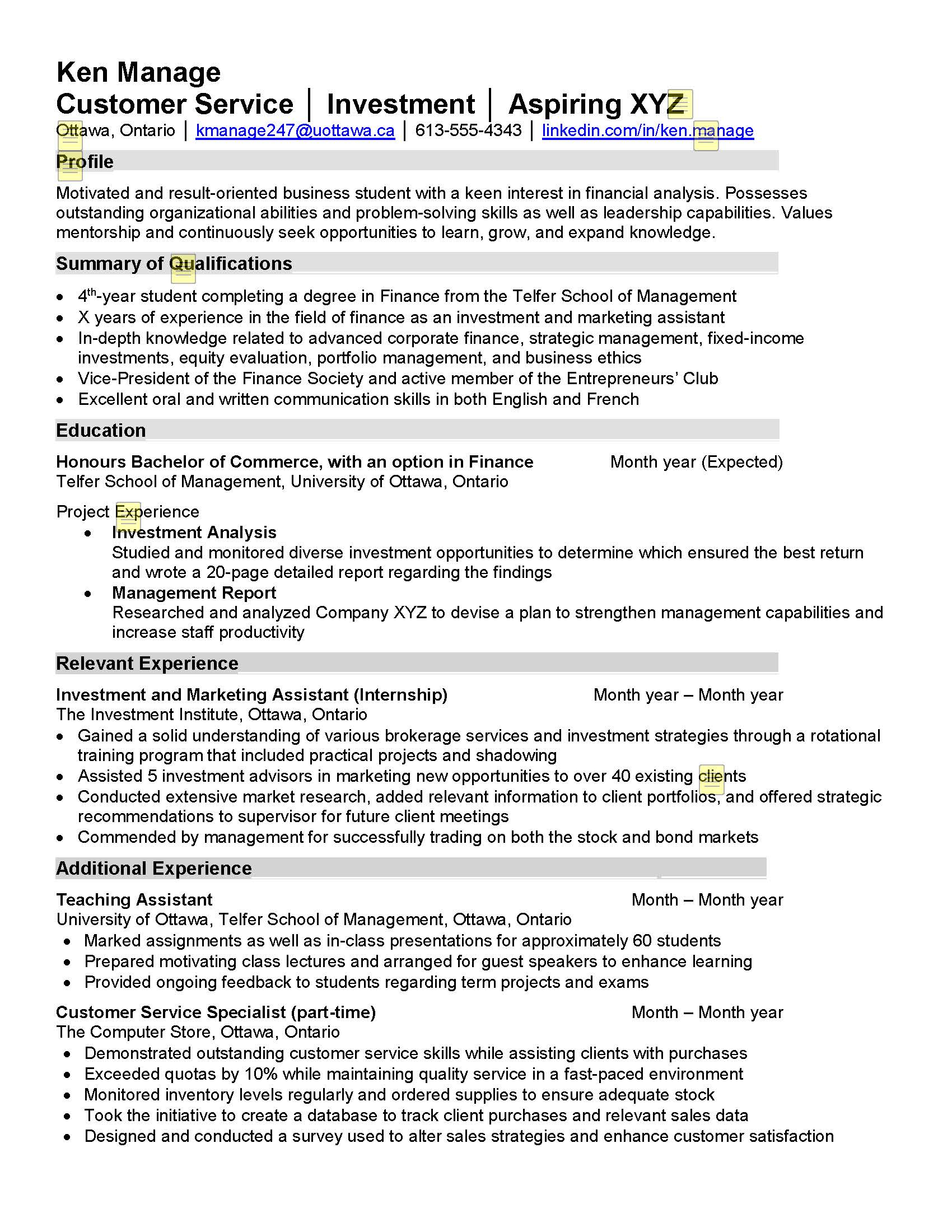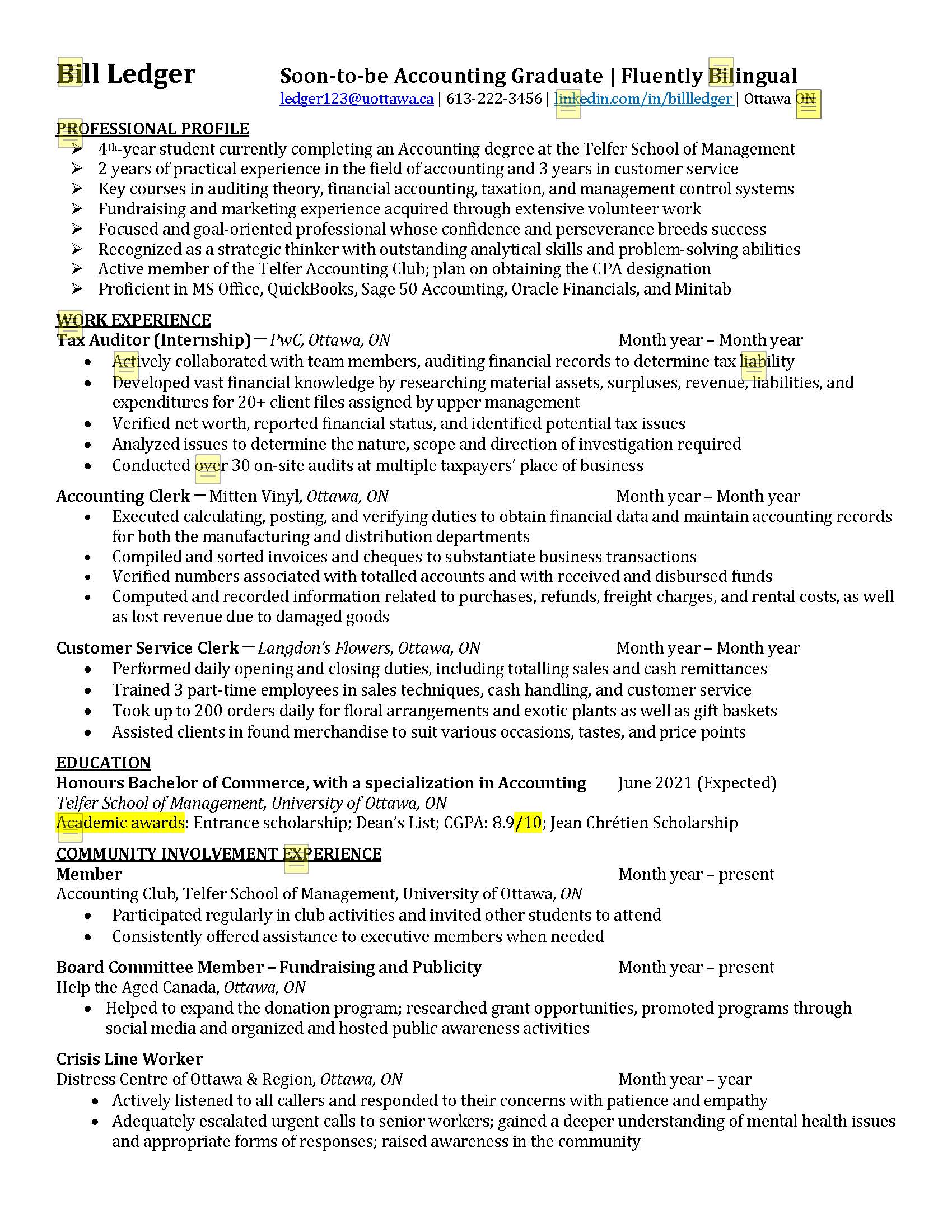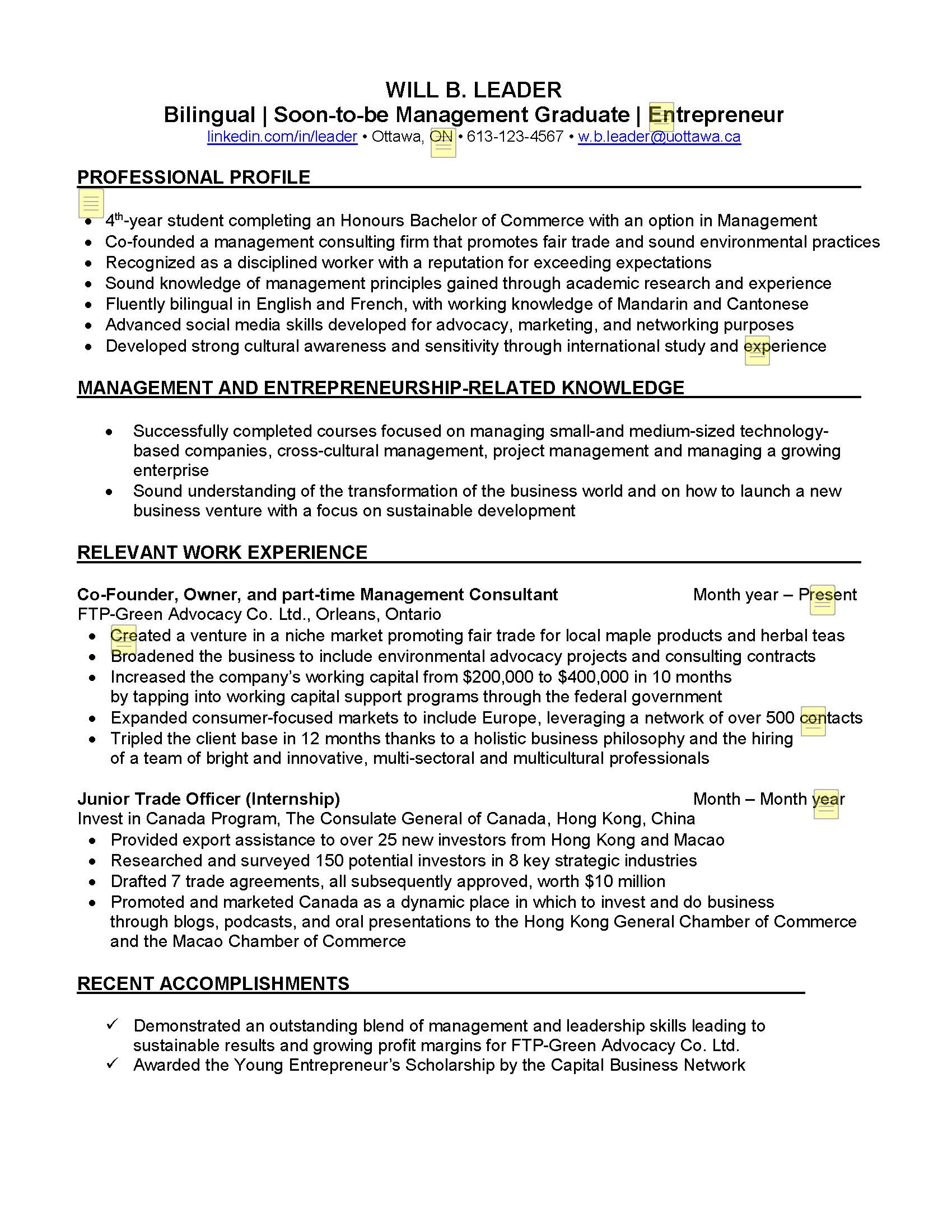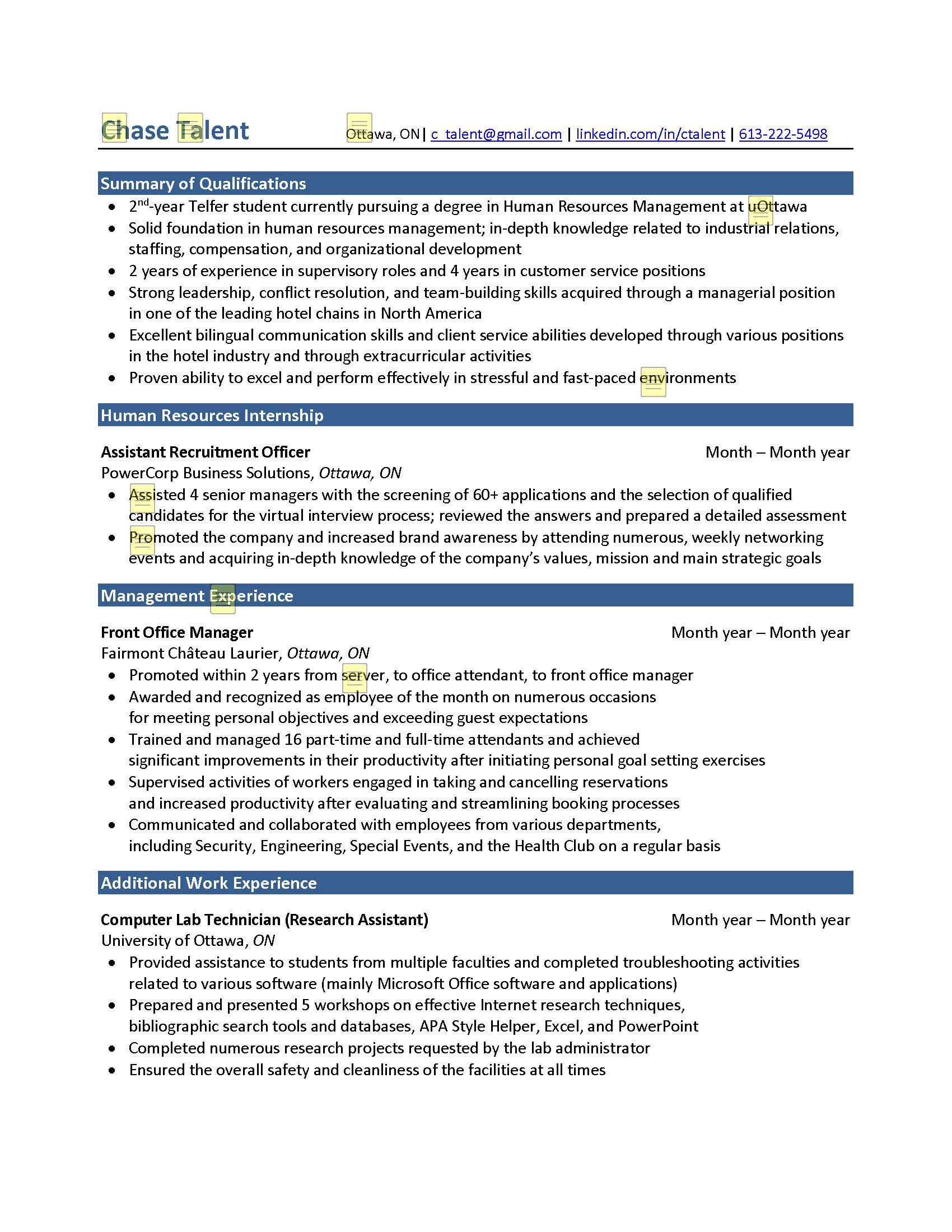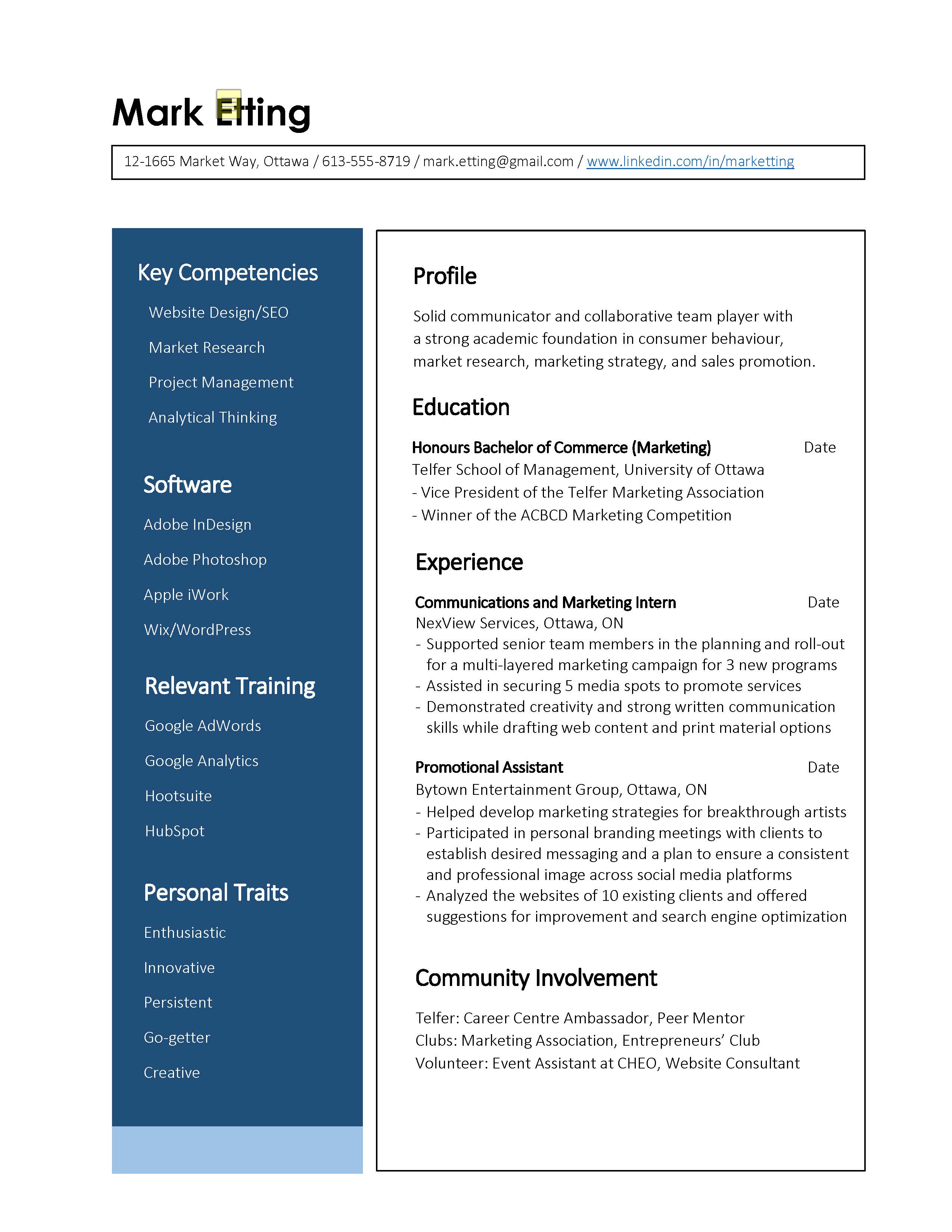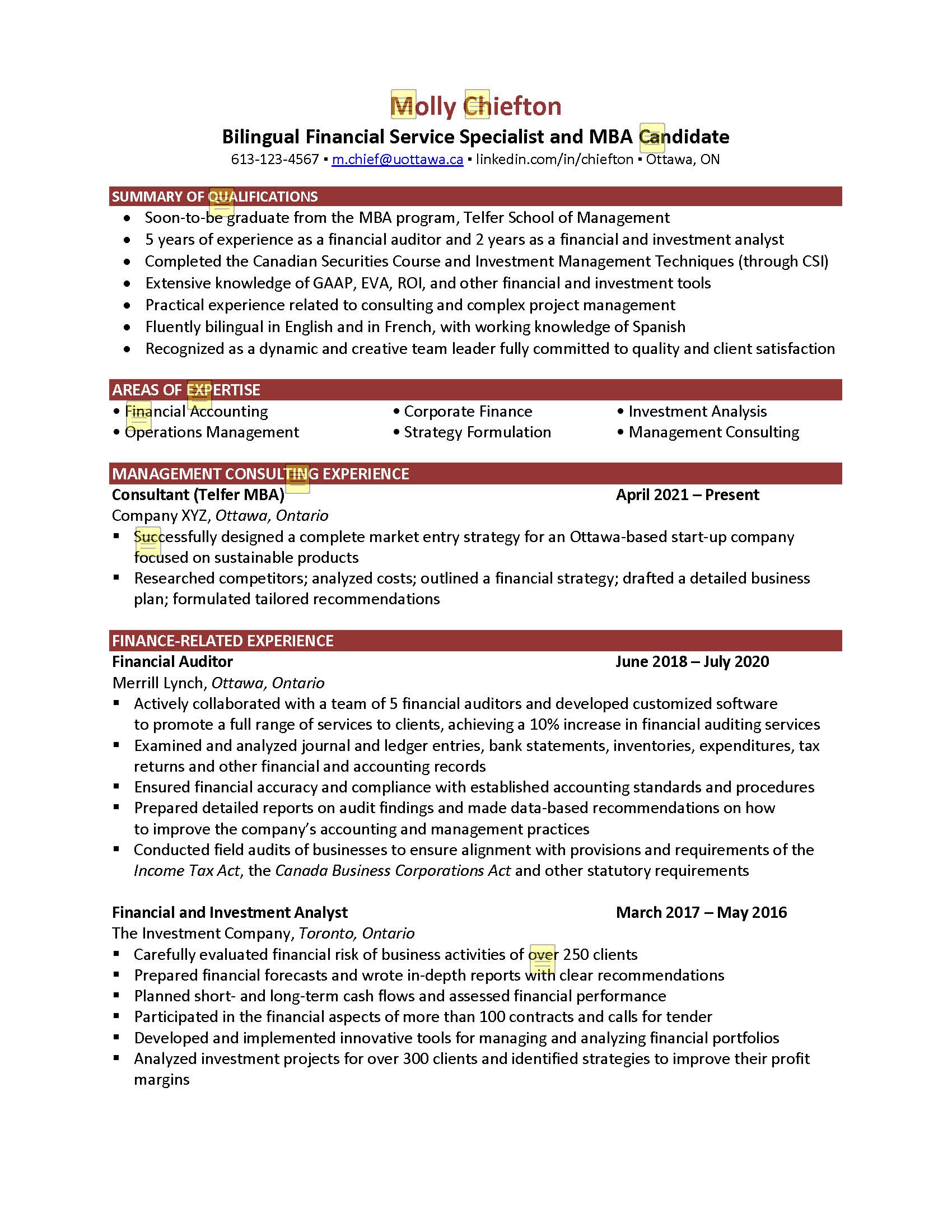Your resumé: checking all the right boxes
For most job-hunting students, the resumé remains THE first point of contact between them and prospective employers, and THE first (and often last) opportunity to get their attention and interest.
More than a broad portrait of your accomplishments, skills, and experience, your resumé needs to highlight clearly and concisely your key qualifications with regards to a particular position (i.e., it must check all the right boxes).
Once submitted to an employer, your resumé becomes a decision-making tool for hiring managers, recruiters and, increasingly often, software known as applicant tracking systems (ATS).
Your goal as a job hunter/resumé designer is to make it as easy as possible for them to determine early on that you meet all the requirements for the position and that the rest of your application is worth reading.
HOW? By following these four steps:
- Formatting your resumé
- Impacting recruiters
- Editing the language
- Tailoring the content
1) Formatting your resumé
When choosing a resumé format, the simpler, the better. Fancy, heavily formatted layouts often lead to rejection. Why? Because they are not easily processed by ATS, nor by recruiters. Therefore, your resumé MUST be easy to read for both. That is why formatting is the first step in creating a strong resumé.
Help recruiters to choose you by providing them with the information they need in the proper order of importance, for example: 1) objective statement; 2) key qualifications; 3) professional experience; 4) education.
REMEMBER: The care, consistency, and precision with which you format your resumé is a direct reflection of the care, consistency, and precision with which you will craft your assignments and communications once hired. Recruiters do pay attention to formatting and sadly, many, many candidates don’t.
-> Check out our resumé templates below and read the comments in the margin to understand how to best format your own resumé to beat ATS and impress recruiters.
Talk to an expert
For any advice on how to format your resumé to beat ATS and impress recruiters, book an individual appointment with the Professional Development Coordinator at the Telfer Career Centre through Career Launch.
Learn more
Beating the bots: why you need to know about ATS BEFORE you apply for any job
Getting back to the basics: the not-so-obvious benefits of a classic resume format
2) Impacting recruiters
To impact recruiters, you need to describe your experience (professional, volunteer, or extracurricular) with powerful language. When describing any given experience:
- Start with a powerful, past-tense action verb.
- Focus on your accomplishments and positive contributions.
- Limit yourself to one full line or two, not more.
Help recruiters to choose you by highlighting how you have positively impacted your former employers/organizations.
REMEMBER: Recruiters want to see what you can do for them in the future. Your positive contributions to past employers are an indicator of the positive impact you will have on future ones.
-> Check out our lists of powerful action verbs and adjectives, which will help you build impactful bullet points.
POWERFUL ACTION VERBS
Talk to an expert
For any advice on how to craft the most impactful bullet points for your resumé, book a resumé critique with the Professional Development Coordinator at the Telfer Career Centre through Career Launch.
3) Editing the language
Once you have chosen the best format for your resumé, you need to edit the content for concision and relevance and the language for accuracy and correctness. Easier said than done? Perhaps, but with the right tools and regular practice, you will excel at it.
- Not a language expert? Equip yourself with a grammar- and spell-checking app/software.
- Even better: equip yourself with a second grammar- and spell-checking app/software.
- Let your document “rest” overnight and proofread it on paper with fresh eyes.
- Get yourself a proofreading buddy or, even better, a peer-review committee.
Help recruiters to choose you by showing them that you can communicate concisely and efficiently.
-> Check out the following grammar‑ and spell‑checking apps/software:
REMEMBER: The language correctness and accuracy you display on your resumé do not lie: they are a clear demonstration, not only of your written communication skills, but also of your care and respect for the employer. Assume that any typo or inaccuracy will lead to a rejection of your application.
Talk to an expert
For any advice on how to edit your resumé, book a resumé critique appointment with the Professional Development Coordinator at the Telfer Career Centre through Career Launch.
Learn more
Five things to remove from your resumé
Six skills too many candidates forget to include on their resumé
4) Tailoring the content
The best way to set yourself apart from your competition is to tailor your resumé each time you apply for a position. Indeed, a tailored resumé shows that you clearly understand ─ and meet ─ the requirements for the posting, that you respect the employer and that you can think analytically and strategically.
Help recruiters to choose you by rapidly making it clear on your resumé that you meet all their requirements.
-> Check out our resumé checklist, which includes many tailoring tips.
RESUMÉ CHECKLIST
REMEMBER: Since recruiters will use the job description to assess your application, you should do the same to craft your resumé. Identify the main keywords in the posting and use them to describe your own qualifications and experience.
Talk to an expert
For any advice on how to tailor your resumé for a specific application, book a resumé tailoring (for a specific job posting) appointment with the Professional Development Coordinator at the Telfer Career Centre through Career Launch.
Resumés Templates

